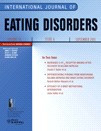Bronsky J, Nedvidkova J, Krasnicanova H, Vesela M, Schmidtova J, Koutek J, Kellermayer R, Chada M, Kabelka Z, Hrdlicka M, Nevoral J, Prusa R. Int J Eat Disord. 2010 Oct 26. IF: 2.278

Abstract:
OBJECTIVE: Orexin A (OXA) is a hypothalamic neuropeptide involved in regulation of food intake and nutritional status. There are multiple disturbances of neuropeptide signaling described in girlswith anorexia nervosa (AN), but OXA levels have not been addressed in this population to date. Therefore, we analyzed OXA levels of AN girls in this study. METHOD: OXA (radioimmunoassay/RIA/method), leptin, insulinlike growth factor-1 (IGF-1), and insulinlike growth factor-1 binding protein-3 (IGFBP-3) levels were measured before and after 8weeks of realimentation in 36 girls with AN and in 14 healthy controls (control group: CG). RESULTS: Average weight increased significantly in AN during the study (p < .0001), while plasma levels of OXA decreased (before realimentation: 56.2 ± 2.4 pg/ml; after realimentation: 47.5 ± 1.4 pg/ml; p = .0025). OXA levels before realimentation differed from levels in the CG (47.15 ± 2.6 pg/ml, p = .034), but not afterward. We did not find any correlation between OXA and age, height, weight, BMI; or IGF-1, IGFBP-3, and leptin levels. DISCUSSION: OXA levels in untreated AN patients differ significantly from healthy subjects and decrease during realimentation. These findings indicate that OXA may be involved in the nutritional regulation of malnourished children and adolescents.
-mk-